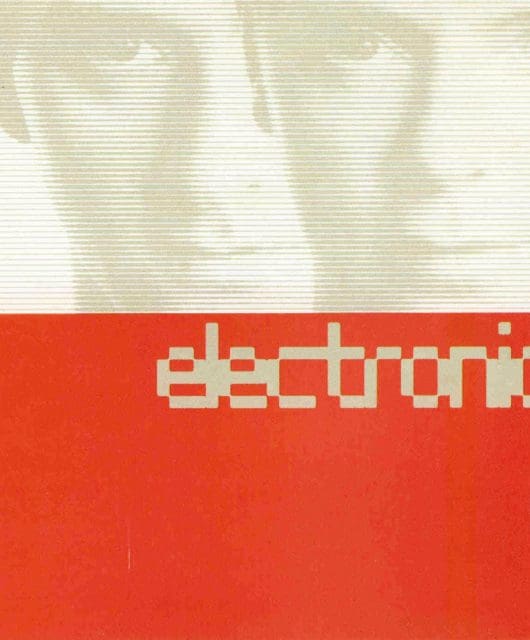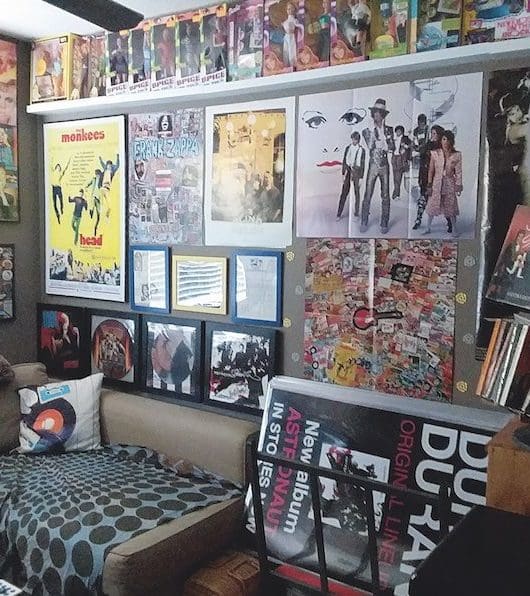Classic Album: Fleetwood Mac – Tango In The Night
By Felix Rowe | March 28, 2025
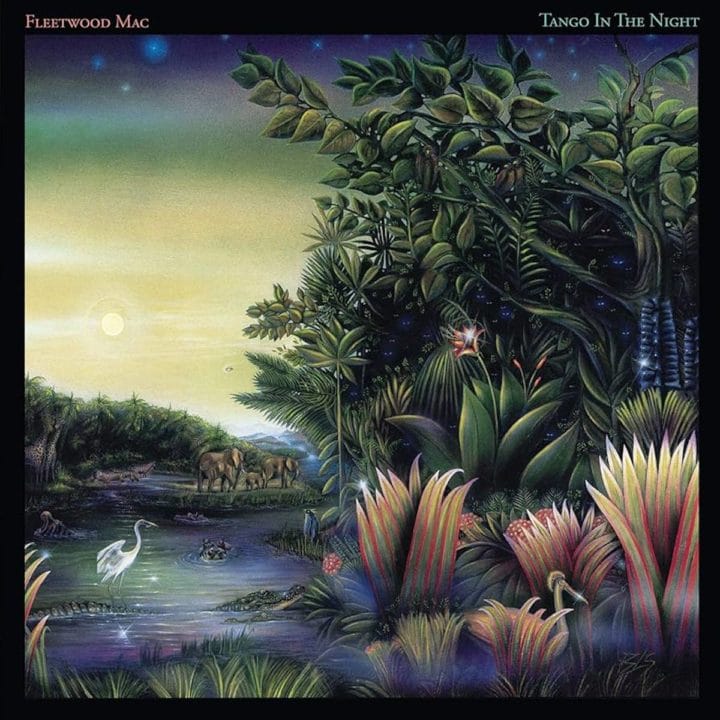
A mostly AWOL Stevie Nicks was just the tip of the iceberg when it came to the difficult birth of Fleetwood Mac’s 14th studio album, Tango In The Night. So how did a masterclass in pop come out of such an apparent trainwreck?
“Everyone is a little crazy underneath the surface, I just think that we’re a bit more exposed than most.” So said Fleetwood Mac’s Lindsey Buckingham in 1987, upon the release of the group’s latest record, Tango In The Night. As even the most casual observer knows, Fleetwood Mac’s offstage domestics are as legendary as their back catalogue. But then, for this group, the art and the antics are inseparable.
The Buckingham-Nicks soap opera is woven into the very fabric of the classic line-up; an integral ingredient in their unique chemistry. Rumours, of course, is the infamous embodiment of that, but Tango In The Night, released a decade later, remains true to form. Contemporary interviews with Lindsey and Stevie, and John and Christine McVie, on NBC’s Today show are quite literally couples therapy, albeit with an audience of millions.
Speaking of the band’s domestic arrangements in somewhat understated fashion, Buckingham acknowledged “an interesting tension from time to time”.
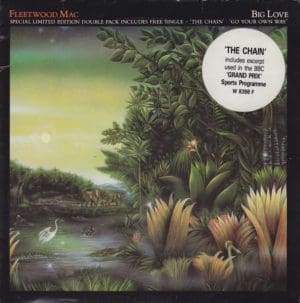
Turbulent Inception
Meanwhile, Nicks has since noted that recording vocal parts for the album in her ex-boyfriend’s bedroom was not a healthy experience. When one considers Tango’s fractious gestation – a group of headstrong individuals pulling in five different directions – it’s a miracle it was even completed. At this point in the mid-80s, the various members were largely concerned with their own solo careers. Only bassist, John McVie was yet to take the plunge.
Drink and drugs were still very much on the menu, too. Nicks was overcoming a spiralling cocaine addiction, while John McVie’s drinking led to a life-changing seizure that made him kick alcohol for good. The last couple of group efforts had failed to match their earlier success, and a new Fleetwood Mac record felt more like a contractual obligation than something to celebrate.
A Commercial Triumph
Despite the odds stacked against it, Tango In The Night is actually rather special. Not only a surprisingly coherent collection, it’s an ambitious and intricate production, that’s simultaneously accessible and immediate. It was a new commercial peak for the Mac containing some of the group’s finest work, hitting the UK top spot three times, and eventually shifting over 15 million units. While the album sounded truly fantastic upon release, it only continues to improve with age.
The band had famously come a long way from their London beginnings, gradually morphing from Peter Green’s 60s blues combo into stalwarts of 70s Californian sun-drenched soft rock. As they entered their third decade, Tango In The Night saw the band take another sonic leap forward, flirting with synth-pop with the increasing presence of electronics and programmed drum machines. It also showcases innovative sampling techniques – particularly on the vocals – to create lush, otherworldly textures. It’s often tricky to determine which singer is performing what, but it blends beautifully.
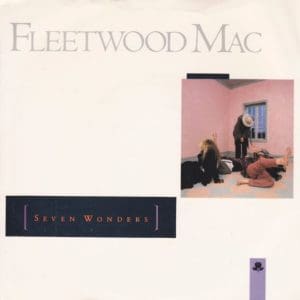
Rootsy & Organic
If Rumours is the consummate 70s album, then Tango In The Night represents the very best of the 80s. Both demonstrate the fine songcraft of the group’s three main writers. Yet while Rumours is rootsy and organic, with a warm, live feel, Tango In The Night showcases Buckingham’s growing confidence and innovation behind the mixing console. His production is exquisite. Stylistically, the LP’s production has a notable presence, and is hyper-enhanced in that characteristically 80s way; but it’s precise and considered, rather than intrusive.
Buckingham’s approach took its cues from his unhinged experimentalism on 1979’s Tusk. Crucially, though, he tamed the looseness, sharpening the focus into a streamlined pop record. While there’s a lot going on, each element sits comfortably within its own space. The syncopated stabs and riffs are enhanced by the very fact they’ve been given room to breathe.
By now Buckingham was using the studio as an instrument, with wonderful results. The Fairlight synthesizer – a favourite tool of contemporary visionaries, including Kate Bush and Peter Gabriel – enabled him to take recorded samples of vocals or percussion rhythms and replay them through the keyboard. The manipulation of cut-up vocal harmonies was key in giving the album its uniquely identifiable character. Ethereal, breathy vocal textures abound, alongside much layering of rhythms and sounds, from punchy power chords to rhythmic drum flourishes.
Can You Hear Me Calling?
Another party trick was experimenting with tape speeds, slowing down the reels while recording to find interesting effects. Although apparently an arduous experience (according toco-producer, Richard Dashut), it led to audio gold: the classic opening of Everywhere was in fact played on acoustic guitar at an ultra-slow recording speed, then brought back up to tempo, producing that shimmering effect. Presumably the Barry White-style vocals on Family Man were achieved by doing the very opposite.
When recording began in earnest, Buckingham had already set aside some of his best work in years for a mooted solo record. Unfortunately for his solo ambitions – but great news for Mac fans – Mick Fleetwood had managed to cajole him into relinquishing them to the band. Lindsey’s tracks, largely recorded in his home studio, ultimately formed the basis of Tango In The Night.
For all the talk of the Buckingham/Nicks chemistry, in many ways, it’s actually the (musical) relationship between Buckingham and Christine McVie that shines brightest on this record. Christine contributed several tracks that elevate Tango In The Night to greatness, showcasing her sheer class as a songwriter and knack for writing killer pop hooks. Speaking of the record in 1987 to NBC’s Today show, she said: “There’s always a certain amount of romance on our records… that’s because, you know, I’m writing some of the songs, I’m always writing about romance.”
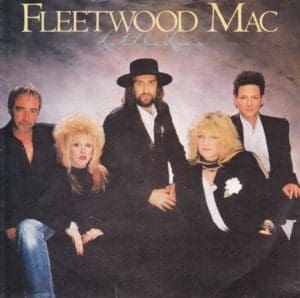
Sweet Little Lies
If the world’s greatest minds were tasked with crafting the perfect pop song, they couldn’t even come close to the pure majesty of Everywhere. We challenge anyone to discover a more blissful four minutes in the entire recorded history of music [outrageous claim, Hyperbole Editor]. In fact, one only need to flip the record to the start of Side Two to discover a worthy contender in Little Lies – again penned by Christine.
Stevie Nicks, by now a fully-fledged solo star following 1981’s US No.1 Bella Donna, was largely absent from sessions while out promoting her latest record. When she did clock in to contribute, she was invariably drunk (by her own admission fortified by a cup of brandy), often leading Buckingham to either scrap her vocals entirely, or stitch takes together to create a coherent lead.
Yet while in practice Nicks’ input was minimal – a mere two weeks over an 18-month recording process – her presence is central to the finished product. Make no mistake, it simply wouldn’t be classic Fleetwood Mac without the drive-time pop of Seven Wonders, the confessional of Welcome To The Room… Sara, or the heart-wrenching When I See You Again.
The three world-class songwriters are supported by the solid, dependable Fleetwood/McVie rhythm section, doing only what’s necessary to serve the song. Mick Fleetwood’s drums are characteristically unfussy: a solid backbone, subtly propelling the music forward with the odd shuffle or fill, but never too flashy to detract – except on a few occasions, notably on Caroline, when the thunderous drums are brought to the fore as a feature instrument.
Return Of The Mac
Upon the release of Tango In The Night in April 1987, Buckingham told the press that making the album was a healing process. Clearly, though, he didn’t believe his own propaganda. Despite his central role in its creation, he didn’t stick around for the victory lap, leaving shortly after release before the world tour kicked off. However, it didn’t stop the album selling by the bucket load.
Tango In The Night has enjoyed a renaissance in recent years. Its brand of slickly produced soft rock – for many years maligned – has again found favour among the new pop elite. Cali-pop groups like Haim and Best Coast have mined its riches, while everyone from Hilary Duff to Niall Horan have covered its singles. Additionally, in the last couple of years, Buckingham and Nicks have cropped up on albums by tastemakers, The Killers and Gorillaz respectively.
For the band themselves – even by their own standards – the last decade has been particularly pivotal, characterised by reunions, break-ups, open heart surgery, and final farewells. This last chapter has, of course, been bookended by Christine McVie’s triumphant return to the group in 2014, and the songbird’s devastating passing in November 2022.
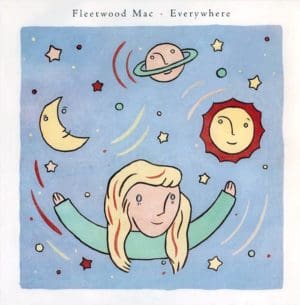
Defining Statement
Sandwiched between these events was Lindsey Buckingham’s unceremonious firing on the eve of a global arena tour, after Stevie Nicks won the “he goes or I go” ultimatum. Indeed, the only thing preventing 2018’s Buckingham/McVie from being a bona fide Fleetwood Mac album was Nicks’ steadfast refusal to have anything to do with it.
Tango In The Night represents the last time the band were truly great on record. Rumours has become one of those classic rock untouchables. But Tango In The Night deserves a pedestal right next to it.
It’s the last perfect Fleetwood Mac album – and it’s no coincidence that it’s the last studio record to feature contributions from all of the imperial line-up, in any notable capacity. People might imagine what the band could have achieved without all of the issues and egos. On the contrary, it was that tension that made for such totally compelling art. A record that essentially tore them apart has become one of their defining statements.
The Songs
Big Love
The album opens with some classic Buckingham: trademark slinky, fingerpicked guitars and cooing vocal, that opens out into full throttle on the chorus set to powerful guitars. The version we hear on Tango… was originally recorded for Lindsey’s planned solo album, and remained largely unchanged, with Mick Fleetwood on drums being the only other Mac member to perform on it. The climatic and rather steamy “ooh” and “uh” vocal outro, though often identified as a metaphor for the Buckingham and Nicks interplay, was actually performed entirely by Buckingham, and sampled into a Fairlight.
Seven Wonders
A driving up-tempo song that opens with synth pads and a chiming chorus guitar before the propulsive drums kick in. A live fan favourite, and one of a smattering of Stevie Nicks’ lead contributions, it was largely written by the artist Sandy Stewart, who collaborated with Nicks on much of her solo work during the 80s. Released as a single in June 1987, it missed the UK Top 40, but rose to No.19 on the US Billboard Hot 100. It enjoyed a more recent revival when featured in the American Horror Story: Coven series finale.
Everywhere
As anyone with ears will attest, this is clearly a contender for the best pop song ever. The key is in its simplicity, a beautifully breezy earworm and perfect melding of Christine’s melody with Lindsey’s production. When it opens out into that luscious power harmony on the chorus, it’s as if the heavens have parted to reveal a beam of light from above. (It also has the honour of being Fleetwood Mac’s first ever single on CD.) Interestingly, while it reached the UK Top 5 and performed well on release, Everywhere was slightly overshadowed by Little Lies at the time.
Evidently, the Belgians have exquisite taste in music, it being the only country in which it topped the chart (although it hit the top spot on the US and Canadian Adult Contemporary charts, too). But its majesty has been revealed over time. It re-entered the UK Top 20 in 2013 after it featured in an advert. The track has been covered by everyone from Chaka Khan to Vampire Weekend, and most recently, in November 2021, by Niall Horan and Anne Marie for BBC Children in Need.
Caroline
The track kicks in with a ‘skulking’, menacing character to the groove – a rising tension that never fully resolves. Then, in comes another infinitely sample-able and ethereal vocal refrain – presumably performed by Christine McVie – that’s vaguely reminiscent of Enya. Buckingham sings lead, accompanied by his chorus-laden guitars and a neat bass riff. It’s carried along on a crashing rhythmic drum pattern from Mick Fleetwood on the main chorus hook; one of just a few times when the drums are featured prominently.
Tango In The Night
Another Buckingham-led track, originally earmarked for the solo record that never was. It’s characterised by harp-like glissando plucked sounds, and big guitar stabs that slam in over his belting chest voice vocal, set to skittish beats. Two minutes in there’s an amazing and eerie vocal breakdown section (Beach Boys-meets-haunted house music), before ending with a squealing, apocalyptic guitar solo, as the usually restrained Mick Fleetwood lets rip on the drums. This is Fleetwood Mac at their most progressive and experimental, yet amazingly still squeezed into a track just under the four-minute mark.
Mystified
And now for something totally different: a Christine McVie gem. Another soundbite with its memorable riff played on chiming keys. Characteristic of McVie, it’s very pretty and melodic, perfectly sequenced to follow the more chaotic title track. The arrangement is subtle and spacious. If it wasn’t for the two other huge Christine McVie hits on Tango In The Night, this one may have got a lot more attention. It’s one of the more lightweight tracks on the album, but still serves to soothe the soul perfectly.
Little Lies
Another Christine McVie classic, and a nice example of the three identifiable vocals all layering up in succession in the chorus “tell me lies” refrain: Christine, then Stevie, then Lindsey. The production literally shimmers and glistens as twinkling guitars and keys intertwine with one another over Fleetwood’s driving beat. Co-written with her then husband, Eduardo Quintela, Little Lies became the biggest hit from the record and an enduring song of the band’s career. It was chosen as the second track on the setlist for their final arena tour in 2019. More recently, it has been covered by Hilary Duff.
Family Man
Lindsay Buckingham’s ode to family life. There’s a vaguely calypso feel to the rhythm. Another total earworm, with breathy, manipulated vocals. A lovely spacious guitar solo played on classical guitar has echoes of Sultans Of Swing, with castanets in the background. The deep bass vocal injects a little funk-soul flavour into proceedings. In another world, this could have been a huge hit for Prince.
Welcome To The Room… Sara
Musically, Welcome To The Room… Sara is a relatively light, upbeat Cali sunshine track, led on acoustic guitars and reminiscent of the Rumours era – at odds with the inspiration behind the track. So, who was Sara? That was Nicks’ pseudonym while attending rehab sessions for cocaine abuse (although the name ‘Sara’ famously had ongoing resonance from the group’s earlier single on the Tusk album).
Isn’t It Midnight
A driving, chugging New Wave rock track with propulsive 4/4 beat and 80s distorted power chords – strangely recalling Kenny Loggins’ 1986 mega-hit Danger Zone, until Christine’s vocals come in, followed by the shimmering chorus-laden synth pads and muted guitar licks, backed up by more breathy backing vocals from Buckingham. This has a real synth-wave sound, like something out of an 80s sci-fi film soundtrack for Bladerunner or Mad Max. The outro features more ridiculous squealing, spacey guitars.
When I See You Again
A sad lament written and performed by Stevie Nicks, sung to plucked acoustic guitars, with Buckingham and Christine McVie on backing vocals. Nicks’ croaky and faltering voice matches the emotion of the song perfectly as she sings, “What’s the matter, baby?” hauntingly. Buckingham supposedly had to craft the final performance from various fragments from Nicks, though you would never tell. The result is stunning – the most understated but affecting track on the record.
You And I, Part II
The album ends on an uptempo, light-hearted note. As with Family Man, it’s another track with a funky calypso feel to the beat, with syncopated muted guitars and an extremely kitsch abrasive keyboard riff. Again it features those very breathy vocal refrains from Buckingham and Christine that are a real signature of this album. A collaboration between Christine and Buckingham, it initially surfaced as the B-side to the album’s first single Big Love.
A 6LP Fleetwood Mac boxset, featuring the group’s iconic 1975-1987 albums: Fleetwood Mac, Rumours, Tusk, Mirage and Tango In The Night – is available on crystal-clear vinyl as a 6LP boxset as well as a 5CD set. Order here
Sign up for the Classic Pop newsletter



